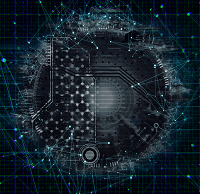

“Internet use is trending towards bandwidth-intensive content and an increasing number of attached ‘things’. At the same time, mobile telecom networks and data networks are converging into a cloud computing architecture,” explains George Senzere, pre-sales manager at Schneider Electric South Africa.
“To support these needs, computing power and storage is being inserted on the network edge, in order to lower data transport time and increase availability. Known as edge computing, it places data acquisition and control functions, storage of high-bandwidth content, and applications closer to the end-user. These resources are inserted into a logical end of a network (Internet or private network), as part of a larger cloud computing architecture.
“Edge offers three major benefits: easing of bandwidth constraints, IoT control point, and replication and protection of cloud services on-premise.”
Bandwidth surging worldwide
Bandwidth refers to the transmission speed of data on the network. However, despite providers’ rated speeds, the actual speed obtained in a given network is usually lower than the peak rating. The greatest probability of network congestion is from high-bandwidth video content. VoD (Video on Demand), 4K TV, also known as Ultra HD, and video streaming are the fastest growing high-bandwidth applications.
“To relieve network congestion, service providers are interconnecting a system of computers on the Internet that caches the content closer to the user. This edge computing enables the content to be deployed rapidly to numerous users by duplicating the content on multiple servers and directing the content to users based on proximity.”
IoT aggregation and control point
“To provide smart cities, agriculture, cars, health, etc. with intelligence requires massive deployment of the Internet of Things (IoT) sensors. An IoT sensor is defined as a non-computer node or object, with an IP address, that connects to the Internet. As the price of sensors continues to decline, the number of connected IoT things will skyrocket. Cisco estimates the IoT will consist of 50 billion devices connected to the Internet by next year.
“These sensors will gather information automatically about physical assets (machines, equipment, devices, facilities and vehicles) to monitor status or behaviour. They use that information to provide visibility and control to optimise processes and resources.
“The Industrial Internet of Things (IIoT), which includes the harnessing of sensor data, machine-to-machine (M2M) communication control and automation technologies, generates large amounts of data and network traffic. IIoT proprietary industrial IT systems and networking technologies are migrating to mainstream commercial IT systems that are communicating over IP (Internet Protocol) networks. Edge computing becomes the interface between the two.”
On-premise applications
“The need to maintain or increase availability of IT and its networks is almost always a top-of-mind concern. Cloud computing has always been a centralised architecture. Edge computing transforms cloud computing into a more distributed computing cloud architecture.
“The main advantage is that any kind of disruption is limited to only one point in the network, instead of the entire network. A Distributed Denial of Service (DDoS) attack or a long-lasting power outage, for example, would be limited to the edge computing device and the local applications on that device, as opposed to all applications running on a centralised cloud data centre.
“Companies that have migrated to off-premise cloud computing can take advantage of edge computing for increased redundancy and availability. Business-critical applications or applications needed to operate core functions of businesses can be duplicated on site.”
Three types of edge computing
Local devices sized to accommodate a defined and specified purpose. Deployment is ‘immediate’ and they are suitable for home or small office applications. An example is cloud storage gateways, which enable users to integrate cloud storage into applications without moving the applications into the cloud itself.
Localised (1-10 racks) data centres provide significant processing and storage capabilities and are fast to deploy in existing environments. These single-enclosure systems can be equipped in rugged enclosure types – rainproof, corrosion proof, fireproof, etc., or normal IT enclosures for an office environment.
Regional data centres have more than 10 racks and are located closer to the user and data source than centralised cloud data centres. Due to their scale, they will have more processing and storage capabilities than localised 1-10 rack data centres. They will also need dedicated power and cooling infrastructure.
“Edge computing enables companies to take better advantage of opportunities by leveraging cloud computing architecture and reducing latency problems.

© Technews Publishing (Pty) Ltd. | All Rights Reserved.